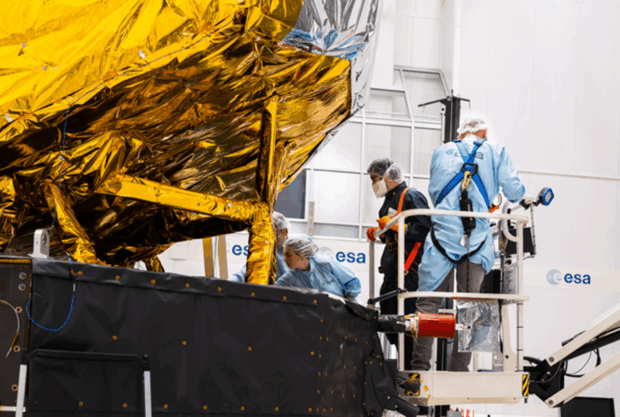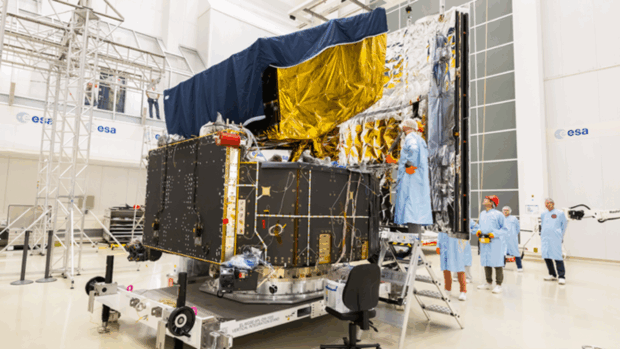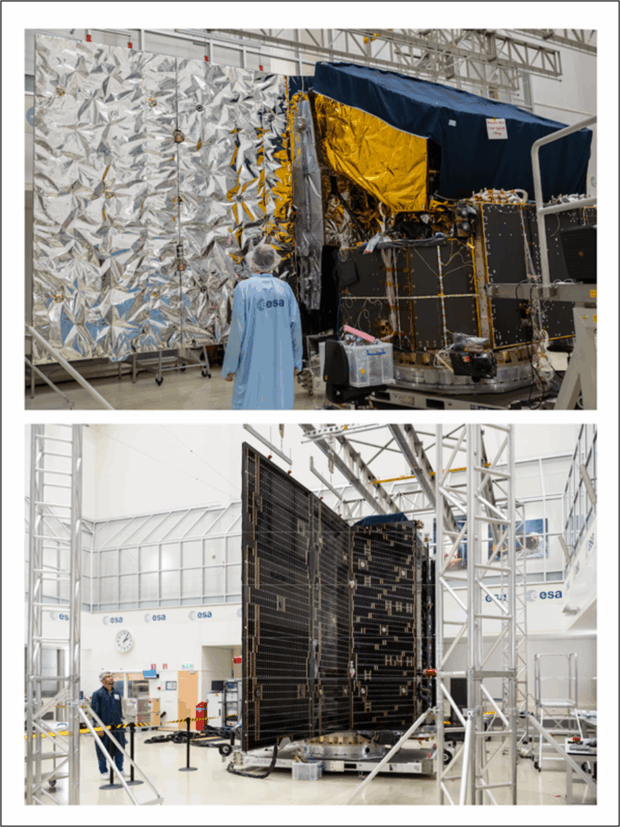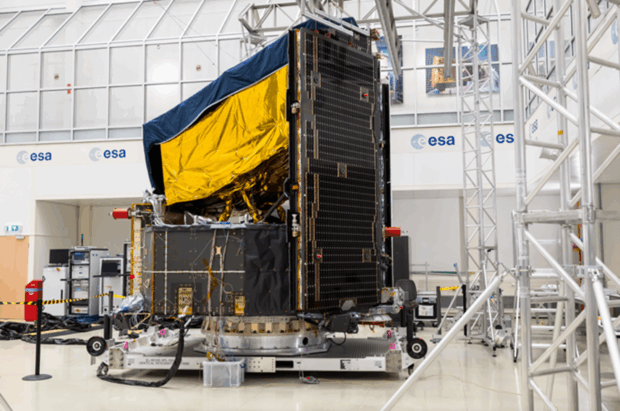Engineers have completed construction of Plato, a mission that will search for Earth-like exoplanets, by fitting its sunshield and solar panels. With this final step, Plato is ready to begin a series of crucial tests ahead of its planned launch in December 2026.

Dr Caroline Harper, Head of Space Science at the UK Space Agency, said:
“The completion of Plato’s assembly is a testament to the dedication and expertise of the teams across Europe. This mission will open a new chapter in our search for Earth-like planets, and the UK is proud to play a leading role – from developing camera electronics and detectors, to building the mission’s data centre and contributing world-class science management leadership.”
Thomas Walloschek, ESA’s Plato Project Manager, said:
“With this operation, we have completed the Plato spacecraft. The combined sunshield and solar array module was the last remaining essential part. It is very satisfying to have reached this moment and to see Plato in its final shape. This is the result of an excellent cooperation between ESA, the Plato Mission Consortium members and Plato's industrial core team.”
The sunshield and solar panels are vital for the mission. The solar array will generate the power needed to operate the spacecraft’s electronics, while the sunshield will protect Plato’s instruments from the Sun’s glare, allowing them to stay cool and perform with precision.
Ana Heras, ESA’s Plato Project Scientist, added:
“Over the years we have seen what Plato would look like in countless detailed drawings and simulated images, yet seeing the real, completed spacecraft feels very special. Plato’s design is optimised to monitor more than 150,000 bright stars at the same time, with high precision. This will enable scientists to hunt for terrestrial planets orbiting stars similar to our Sun.”

UK involvement in Plato
The UK Space Agency has invested £25 million between 2014 and 2024 to support the development and build phase of Plato, securing a leading role for UK institutions in the mission. UK researchers and engineers have contributed across science and technology: Professor Don Pollacco of the University of Warwick leads the mission’s Science Management team, UCL’s Mullard Space Science Laboratory designed and built the camera electronics, and Teledyne e2v produced the CCD detectors. In addition, the University of Cambridge is heading a national consortium to develop the UK Plato Data Centre, supported by the University of Birmingham, University of Oxford, St Andrews and the Open University. Thales Alenia Space UK worked with prime contractor OHB on avionics development and service module integration. Together, these contributions position the UK to play a central role in Plato’s discoveries.
Preparing for the mission ahead
Plato carries 26 advanced cameras, designed to detect the tiniest changes in a star’s brightness. These measurements will reveal the presence of exoplanets as they pass in front of their stars. To achieve this level of sensitivity, each camera must remain at around -80°C. Protected by the sunshield and facing deep space, the instruments will naturally cool and remain at this temperature throughout the mission.
The spacecraft’s solar panels, folded securely for launch, will unfold once Plato reaches space – extending like a pair of wings. In September, engineers successfully tested this deployment on Earth by simulating weightlessness with a system of pulleys. They also confirmed that the panels can generate the required electricity by shining simulated sunlight on them.

Final tests before launch
Although Plato is now fully assembled, the toughest challenges are still to come. Before launch, the spacecraft must undergo and pass a demanding series of environmental tests to be certified ready for flight. These include:
- Vibration and acoustic tests to mimic the intense shaking and noise of rocket launch.
- Cryo-vacuum testing inside Europe’s largest space simulator, where Plato will face the vacuum and extreme temperatures of space for the first time.

About Plato
Plato (PLAnetary Transits and Oscillations of stars) is part of ESA’s Cosmic Vision programme. It will study terrestrial exoplanets, including those within the habitable zones of Sun-like stars.
The spacecraft is being built by a European industrial consortium led by OHB, with Thales Alenia Space and Beyond Gravity, while the scientific instruments are developed by the Plato Mission Consortium, coordinated by the German Aerospace Center (DLR).
Plato is scheduled to launch on an Ariane 6 rocket in December 2026.
Leave a comment